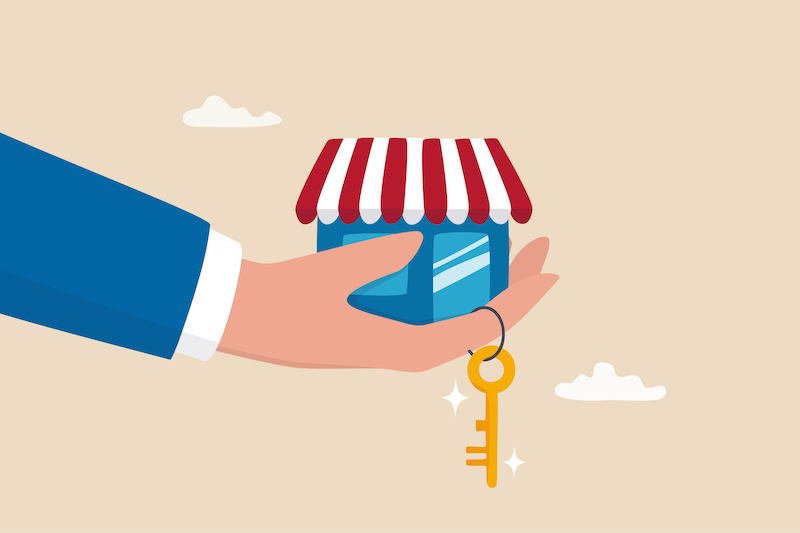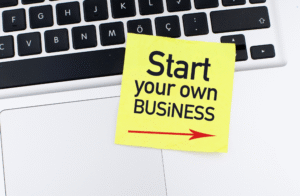In recent years, the number of barbershops has skyrocketed in Singapore, And that’s mainly because running a traditional barbershop has a particular allure, much like when one opens a nice café.
For would-be business owners, everything from the luxurious leather barber chairs with their glistening chrome bases to the stylish, razor-faded hairstyles from the 1950s and 1960s appears to be rather enticing.
But before you invest your hard-earned funds into starting your business, it’s crucial to understand what’s required to open one and how doing so will affect your finances. Here is the whole cost breakdown for opening a barbershop in Singapore!
What are the Varying Rental Charges?
The majority of your startup expenditure will probably be spent on rent. Depending on where you place your barbershop, rents will vary greatly. You may choose a CBD site that is extremely central, giving you daily access to a sizable workforce of working professionals and a huge segment of general shoppers.
Alternative locations include chic neighbourhoods like Bugis, which are beyond the CBD but still part of the larger Central Area. Alternately, you may go towards the suburbs of the Midwest, where rentals are less expensive, but foot traffic is still strong.
The site you pick will significantly affect your expenses, foot traffic income, and perhaps even your brand’s reputation. Carefully consider the trade-offs between these many elements.
1. The City Center and CBD Locations
Rent for commercial space in upscale areas like City Hall, Raffles Place, or Telok Ayer ranges from $10 to $20 per square foot. So, plan to pay $5,000 to $10,000 a month in rent for a typical 500-square-foot barbershop.
By just conducting a fast Google search, you’ll easily discover that many barbers opt to set up business in these exclusive core areas. Such venues provide barbers with easy access to the working population, at least before Covid-19 struck.
Even though Singapore’s economy has completely recovered, many office workers continue to spend a significant amount of their workweek working from home.
They’ll probably keep doing that for the foreseeable future. In such circumstances, it’s probably a good idea for new barbershops to consider locating in residential areas instead.
New barbers can take advantage of the well-populated housing estates in places like Tampines, Sengkang, Toa Payoh, Jurong, etc. Rents are more reasonable there, yet they may still be able to attract customers by providing excellent service, trendy branding, and spending money on social media marketing.
2. The Midwest Suburbs
Some barbers have opted to abandon “cool” addresses in favour of moving out into the suburbs as a result of the sky-high rentals in the city centre. For instance,
The Panic Room is located in Geylang, whilst the classic barber Acidic Chop Shop is located in Jurong West. Even while the rent is less in certain areas, it is by no means necessarily inexpensive.
Barbers should anticipate paying between $5 and $9 per square foot in the heartlands. This equates to rent of between $2,500 and $4,500 per month for a standard 1,000-square-foot barbershop.
Given Singapore’s sophisticated transportation system, residential areas are an important factor to take into account. These days, travelling once or twice a month to one’s preferred barbershop is not something too challenging.
As long as the service is first-rate and affordable, customers will come back. By locating outside of the city centre and successfully cultivating a sizable following that is willing to come to their store, companies like The Panic Room have been able to achieve some level of success.
Going further out is a good choice for aspiring barbers who lack access to large amounts of funds or don’t want to pay a hefty rent each month.
3. Rental Advance Payments
When you sign the lease, your landlord will normally ask for a security deposit equal to three to six months’ worth of rent. Make sure you have saved up 3 to 4 months’ worth of operating expenses (rent, salaries, consumables, etc.) in addition to this deposit.
This will give you a crucial cash flow cushion in case your company doesn’t generate as much money as you had anticipated. You don’t want to have a bankrupt company before you’ve even had a year or two to demonstrate the viability of your business plan.
4. Increases In Rent
Although Covid-19 has undoubtedly lowered some of the demand for business rentals, Singapore simply has a limited amount of available space for commercial uses. So be aware that when your lease ends, your landlord could possibly raise the rent.
Experienced barbershop owners who have strong industry connections or a history of working with landlords may be able to negotiate reduced rental deposits and limitations on rent increases.
However, it’s unlikely that the landlord would give you much wiggle room in talks if you are new to the barbershop business or if your barbershop is too tiny to deserve more benevolent conditions.
If you’re opening a barbershop for the first time, you should sign a lease for no more than six months. A shorter lease will reduce the amount of start-up capital you need to invest, even while it increases the likelihood that your rent will go up after six months.
In contrast, if you begin with a 24-month contract, you will be obligated to pay rent for the following two years whether you are successful or not! By agreeing to a shorter lease, you can see whether your company is attracting clients and making a steady profit.
A shorter lease will provide you with the choice of closing the shop or investing more money to keep it operating if you once you discover that it is not profitable.
A lengthy lease would, however, prevent you from immediately quitting a firm business that is losing money.
5. Costs Associated with Relocation
If you intend to move, you should also consider the prospective expenses. The majority of leases will have a provision demanding that you return the property in its prior condition. It will normally cost between $3,000 and $5,000 to restore a 500-square-foot barbershop to its original state.
Costs of Renovating a New Business Space
Once you’ve chosen a suitable site for your barbershop, you’ll need to make renovations to the space to achieve your desired style.
Maybe it’s a sleek, contemporary barbershop with plenty of glass, polished metal, and neon lighting. Or perhaps what you want is a grungier style, and you, therefore, desire a raucous, vintage-style barbershop.
Whatever your preference, you should set aside at least $10,000 to $20,000 for the renovation of a 500-square-foot barbershop. This budget accounts for the cost of furniture, remodelling labour, and interior design consulting.
Most of the promotion for your shop will come from social media, in the form of photos of recent haircuts you’ve given, your customers getting a haircut, or yourself working in your barbershop, etc.
Given how prominently your premises will be featured in your marketing campaigns, it is prudent to spend a bit extra on an appealing interior layout. Long term, this will pay off as more people become aware of your attractive location and are likely to pay you a visit.
Costs Associated with Hired Manpower
Labour will be your second largest regular expenditure, just behind the rent. A barbershop’s staff strength can be quite flexible. Depending on the size of the business you want to start, and whether you can do your own barbering, you will need to hire a certain number of barbers (or not).
Find a tiny spot in a shopping centre or residential area if you wish to start a one-man show and manage everything yourself – the strain of employee overheads won’t affect you.
Of course, since you won’t have barbers who can give you commissions from the clients they service, your earning potential will be very limited. You’ll need to recruit more barbers who can provide this additional income if you want to own a larger business.
There are several different payment plans you may use for your barbers. Base pay with a commission per cut makes up the most typical compensation plan.
To keep their customers coming back, barbers are encouraged to give excellent service and cultivate strong connections with them. Renting out chairs in your store to each barber for a set monthly charge is another typical remuneration strategy.
You may also recruit apprentice barbers if you are a seasoned barber yourself. It is almost always the case that haircuts by apprentices are less expensive than those of their more experienced counterparts.
This means you may draw in potential customers who are on a tight budget. By developing these apprentices into seasoned barbers, you can also create a talent pipeline.
You save on the wage expenditure needed to recruit an experienced barber right away by hiring them when they’re still young and inexperienced in the field.
What Avenues Should You Explore In Training As A Barber?
There are two ways to get started if you want to perform the barbering yourself but don’t know how to cut hair yet.
1. Enrolling in a Barber Course
Fundamental barbering training costs about $1,500 per student. These classes typically run for two to three days. The essentials of hair-cutting methods, such as how to execute fades, line-ups, and cut layers, will be covered in these classes.
Here are some classes you may take in Singapore:
- Barber School at Hair Mafia & Co: $1,799 for two days
- Barber Course for Beauty Recipe: $1,588 for two days
You can choose to work at a barbershop as an apprentice or a junior barber after completing your selected course.
2. Working as a Barbershop Apprentice
A different option is to work as an apprentice at a reputable barbershop. Some apprenticeships might offer compensation, while others might not. Since you’re starting from scratch, you’ll probably have to perform “menial” duties like cleaning the shop and equipment.
If barbering is something you are genuinely enthusiastic about, you will persevere. There is no better way to learn how to cut hair than by observing experienced barbers in action.
Costs Associated with Purchasing Equipment
Fortunately for business owners in the barber industry, most barbering equipment is reasonably priced. To offer your clients beautiful hair fades, you’ll first need a nice pair of clippers.
To create precise line-ups, you’ll also need a hair detailer. For more accurate beard trimming, hair detailers can also be utilised.
A foil shaver is something else you should have. A cordless model would be a very practical choice.
When it comes to scissors, you’ll need thinning scissors and barber’s scissors.
Last but not least, a quality pair of razors are a need for every barbershop. Today’s hygiene standards state that it’s probably not a good idea to use the same single-blade razor on hundreds or even thousands of consumers.
The issue with using a standard straight-edge razor is that you must also have a costly commercial disinfecting unit to avoid major risks of spreading infectious or blood-borne infections when shaving your customers.
In addition, a straight-edge razor must be stropped before each shave, which adds to the labour-intensive nature of the barber’s trade. To maintain the sharpness of the blade, straight-edge razors must also be properly sharpened every few months, which adds to the cost.
You can sharpen the blade yourself on a whetstone, but this will take some practice and patience.
In comes the shavette, the barber’s rescuer! Single-use, disposable razor blades are used in shavettes and may be changed out for every new customer. Shavettes are a more sanitary and practical choice since a fresh blade is used for each customer.
Furthermore, the blade of a shavette from a reputable brand (such as Feather or Merkur) will be sharper than the blade of a straight razor. Your clients will receive the closest possible shave, thanks to this.
Parker is one of the several Shavettes companies, and their shaving kits are strong and reasonably priced. The full-metal construction of the one below gives it great weight. Each time you pull it out to offer your customers a clean, hot shave, it will make you appear to be a true professional.
After you’ve prepared your hair-trimming tools, you’ll need to have excellent, comfy seats so that your clients may be able to relax. This Old Style Barberchair is ideal if you’re putting up an antique-themed barbershop. It’s inexpensive at $440 per chair.
This barber chair can suit you better if you don’t want to spend so much money. It won’t have the same retro feel, but at $119 per chair, it’s reasonably priced.
You can also think about purchasing a rubber barber’s pad to match your chair. These mats are non-slip, and the substantial cushioning they provide can help to ease the strain from standing all day on your joints.
Costs Associated with Barbershop Consumables
Hair styling supplies, dusting powder, shampoo, antiseptic, and razor blades will be your key consumables. The good news is that most of these consumables are reasonably priced, so they won’t significantly affect your bottom line.
You may carry items like American Crew or Suavecito that are respectable in quality yet reasonably priced. Suavecito sells a massive 32oz (900g) container for $130. This tub size was created especially for barbers. Each customer will only cost you 43 cents if you use 3g of product to style them – exceptional economy!
For very large heads, you could also take into account oil-based pomades. Try the well-known Reuzel Pink, which will delight any greaser that enters your shop.
Stocking up on hair products to sell is a wonderful idea, as well. Following a haircut, you can apply a product to your client’s hair. If they enjoy it, you can then try to complete a deal. This will create a good additional source of income for you.
Utility Expenses for Running a Barbershop
For a normal barber that works 8–10 hours each day, water and electricity will cost about $1,000 per month.
A Complete Rundown of All Set-Up Fees for a New Barbershop
- Rental advance payments: $10,000
- Hired manpower: $10,000
- Purchasing equipment: $5,000
- Consumable Barber products: $200
- Utility expenses: $1,000
The Total Amount: $50,000 to $80,000
What Number of Haircuts Would You Need to Help Break Even?
When determining whether to start a barbershop, this is one of the most crucial issues you’ll need to decide. The minimum start-up costs for a barbershop are between $50,000 and $80,000 if we total all the preceding costs.
Let’s base our breakeven estimates on the following hypotheses:
- You manage a traditional barbershop.
- Your haircut costs $35 per cut (for the market rate).
Therefore, to earn back your initial investment, 1,428 haircuts would need to be given. If you provide 10 haircuts on average every day, it will take you 5 months or 143 days to break even.
Safeguard Your Barbershop Through an Insurance Program
The cost of opening a barbershop is high. Accidents that occur while your barbershop is open can cost considerably more money.
A malfunctioning electrical outlet might cause a fire to start, destroying your shop and all the money you put into it. A close shave or haircut might injure a client, making you legally responsible for the harm caused to them.
A member of your staff could trip and fall at work, making your company responsible for covering his medical costs under the work injury regulations of MOM.
Make sure you insure your investment with reliable barbershop insurance coverage, given the $50,000 or more you will spend developing your barbershop.
You may get one of these plans for as little as $200 a year, which will offer you insurance coverage for a few hundred thousand dollars.
You can ensure your costs are in control and everything goes as per your plan by engaging a corporate service provider to help you incorporate your business as well as guide you through the entire set-up process and beyond.




